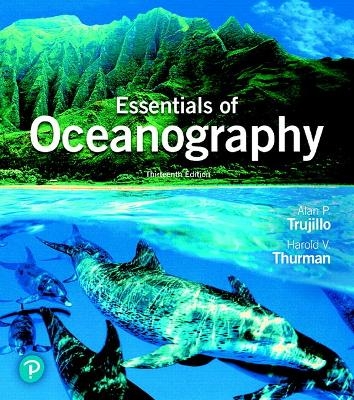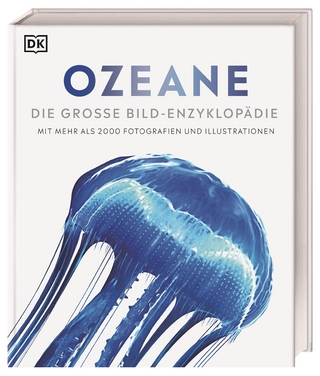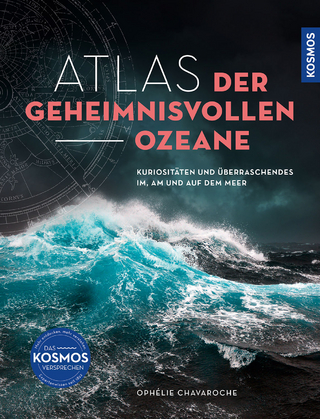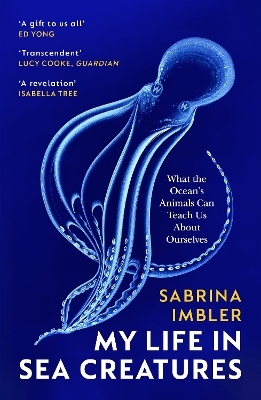
Essentials of Oceanography
Pearson (Verlag)
978-0-13-489152-1 (ISBN)
Dive in to oceanography with trusted content and innovative media
As the bestselling brief book in the oceanography market, Essentials of Oceanography combines dynamic visuals and a student-friendly narrative to bring oceanography to life. The text’s engaging features and the extensive suite of animations and videos keep students interested and excited about the material.
The 13th Edition creates an interactive learning experience that provides tightly integrated text and digital offerings to make oceanography approachable and digestible for students. An emphasis on the process of science throughout the text provides students with an understanding of how scientists think and work. The new edition also helps students develop the scientific skill of practicing and interpreting data with new Exploring Data features supported by Mastering Oceanography coaching activities. A new Creature Feature provides fun facts about marine animals to engage students.
Also available with Mastering Oceanography
By combining trusted author content with digital tools and a flexible platform, Mastering personalizes the learning experience and improves results for each student.Built for, and directly tied to the text, Mastering Oceanography enables an extension of learning allowing students a platform to practice, learn, and apply outside of the classroom.
Note: You are purchasing a standalone product; Mastering Oceanography does not come packaged with this content. Students, if interested in purchasing this title with Mastering Oceanography, ask your instructor for the correct package ISBN and Course ID. Instructors, contact your Pearson representative for more information.
If you would like to purchase both the physical text and Mastering Oceanography search for:
0135185629/9780135185629 Essentials of Oceanography Plus Mastering Oceanography with Pearson eText -- Access Card Package, 13/e
Package consists of:
013489152X / 9780134891521 Essentials of Oceanography
0135175143 / 9780135175149 Mastering Oceanography with Pearson eText -- ValuePack Access Card -- for Essentials of Oceanography, 13/e
About our authors Al Trujillo is a Distinguished Teaching Professor in the Earth, Space, and Environmental Sciences Department at Palomar College in San Marcos, California. He received his bachelor's degree in geology from the University of California at Davis and his master's degree in geology from Northern Arizona University, afterward working for several years in industry. Al began teaching at Palomar in 1990. In 1997, he was awarded Palomar's Distinguished Faculty Award for Excellence in Teaching, and in 2005 he received Palomar's Faculty Research Award. He has coauthored Introductory Oceanography with Hal Thurman and is a contributing author for the textbooks Earth and Earth Science. In addition to writing and teaching, Al works as a naturalist and lecturer aboard Holland America Line and natural history expedition vessels for Lindblad Expeditions/National Geographic in Alaska, Iceland, the Sea of Cortez/Baja California, and the South Pacific. His research interests include beach processes, sea cliff erosion, and active teaching techniques. He enjoys photography, and he collects sand as a hobby. Al and his wife, Sandy, have two children, Karl and Eva. Hal Thurman's interest in geology led to a bachelor's degree from Oklahoma A&M University, followed by seven years working as a petroleum geologist, mainly in the Gulf of Mexico, where his interest in the oceans developed. He earned a master's degree from California State University at Los Angeles. Hal began teaching at Mt. San Antonio College in Walnut, California, in 1968 as a temporary teacher and taught Physics 1 (a surveying class) and three Physical Geology labs. In 1970, he taught his first class of General Oceanography. It was from this experience that he decided to write a textbook on oceanography and received a contract with Charles E. Merrill Publishing Company in 1973. The first edition of his book Introductory Oceanography was released in 1975. Harold authored or coauthored over 20 editions of textbooks that include Introductory Oceanography, Essentials of Oceanography, Physical Geology, Marine Biology, and Oceanography Laboratory Manual, many of which are still being used today throughout the world. In addition, he contributed to the World Book Encyclopedia on the topics of “Arctic Ocean,” “Atlantic Ocean,” “Indian Ocean,” and “Pacific Ocean.” Hal Thurman retired in May 1994, after 24 years of teaching, and moved to be closer to family in Oklahoma, then to Florida. Hal passed away at the age of 78 on December 29, 2012. His writing expertise, knowledge about the ocean, and easy going demeanor are dearly missed.
Introduction to Planet "Earth"
1.1 How Are Earth's Oceans Unique?
1.2 How Was Early Exploration of the Oceans Achieved?
1.3 What Fields of Science Does Oceanography Include?
1.4 What Is the Process of Science and the Nature of Scientific Inquiry?
1.5 How Were Earth and the Solar System Formed?
1.6 How Were Earth's Atmosphere and Oceans Formed?
1.7 Did Life Begin in the Oceans?
1.8 How Old Is Earth?
Essential Concepts Review
Plate Tectonics and the Ocean Floor
2.1 What Evidence Supports Continental Drift?
2.2 What Additional Observations Led to the Theory of Plate Tectonics?
2.3 What Features Occur at Plate Boundaries?
2.4 Testing the Model: Can Plate Tectonics Explain Other Features in the Ocean and on Land?
2.5 How Has Earth Changed in the Past, and How Will it Look in the Future?
Essential Concepts Review
Marine Provinces
3.1 What Techniques Are Used to Determine Ocean Bathymetry?
3.2 What Features Exist on Continental Margins?
3.3 What Features Exist in the Deep-Ocean Basins?
3.4 What Features Exist along the Mid-Ocean Ridge?
Essential Concepts Review
Marine Sediments
4.1 How Are Marine Sediments Collected, and what Historical Events Do They Reveal?
4.2 What Are the Characteristics of Lithogenous Sediment?
4.3 What Are the Characteristics of Biogenous Sediment?
4.4 What Are the Characteristics of Hydrogenous Sediment?
4.5 What Are the Characteristics of Cosmogenous Sediment?
4.6 How Are Pelagic and Neritic Deposits Distributed?
4.7 What Resources Do Marine Sediments Provide?
Essential Concepts Review
Water and Seawater
5.1 Why Does Water Have Such Unusual Chemical Properties?
5.2 What Important Physical Properties Does Water Possess?
5.3 Why Is Seawater Salty?
5.4 Why Does Seawater Salinity Vary?
5.5 How Does Seawater Salinity Vary at the Surface and with Depth?
5.6 How Does Seawater Density Vary with Depth?
5.7 Is the Ocean Acidic or Basic?
5.8 What Factors Control the Distribution of Carbon and Oxygen in the Ocean?
Essential Concepts Review
Air - Sea Interaction
6.1 What Causes Variations in Solar Radiation on Earth?
6.2 What Physical Properties Does the Atmosphere Possess?
6.3 How Does the Coriolis Effect Influence Moving Objects?
6.4 What Global Atmospheric Circulation Patterns Exist?
6.5 How Does the Ocean Influence Global Weather Phenomena and Climate Patterns?
6.6 Can Power from Wind Be Harnessed as a Source of Energy?
Essential Concepts Review
Ocean Circulation
7.1 How Are Ocean Currents Measured?
7.2 What Creates Ocean Surface Currents and How Are They Organized?
7.3 What Causes Upwelling and Downwelling?
7.4 What Are the Main Surface Circulation Patterns in Each Ocean Basin?
7.5 How Do Sea Ice and Icebergs Form?
7.6 How Do Deep-Ocean Currents Form?
7.7 Can Power from Currents Be Harnessed as a Source of Energy?
Essential Concepts Review
Waves and Water Dynamics
8.1 How Are Waves Generated, and How Do They Move?
8.2 What Characteristics Do Waves Possess?
8.3 How Do Wind-Generated Waves Develop?
8.3 How Do Wind-Generated Waves Develop?
8.4 How Do Waves Change in the Surf Zone?
8.5 How Are Tsunami Created?
8.6 Can Power from Waves Be Harnessed as a Source of Energy?
Essential Concepts Review
Tides
9.1 What Causes Ocean Tides?
9.2 How Do Tides Vary during a Monthly Tidal Cycle?
9.3 What Do Tides Look Like in the Ocean?
9.4 What Types of Tidal Patterns Exist?
9.5 What Tidal Phenomena Occur in Coastal Regions?
9.6 Can Tidal Power Be Harnessed as a Source of Energy?
Essential Concepts Review
Beaches, Shoreline Processes, and the Coastal Ocean
10.1 How Are Coastal Regions Defined?
10.2 How Does Sand Move on the Beach?
10.3 What Features Are Typical of Erosional and Depositional Shores?
10.4 How Do Changes in Sea Level Produce Emerging and Submerging Shorelines?
10.5 How Does Hard Stabilization Affect Coastlines?
10.6 What are the Characteristics and Types of Coastal Waters?
10.7 What Issues Face Coastal Wetlands?
Essential Concepts Review
Marine Pollution
11.1 What Is Pollution?
11.2 What Marine Environmental Problems Are Associated with Petroleum Pollution?
11.3 What Marine Environmental Problems Are Associated with Non-Petroleum Chemical Pollution?
11.4 What Marine Environmental Problems Are Associated with Non-point Source Pollution, Including Trash?
11.5 What Can You Do to Help Prevent Marine Pollution?
11.6 What Marine Environmental Problems Are Associated with Biological Pollution?
Essential Concepts Review
Marine Life and the Marine Environment
12.1 What Are Living Things, and How Are They Classified?
12.2 How Are Marine Organisms Classified?
12.3 How Many Marine Species Exist?
12.4 How Are Marine Organisms Adapted to the Physical Conditions of the Ocean?
12.5 What Are the Main Divisions of the Marine Environment?
Essential Concepts Review
Biological Productivity and Energy Transfer
13.1 What Is Primary Productivity?
13.1 What Is Primary Productivity?
13.2 What Kinds of Photosynthetic Marine Organisms Exist?
13.3 How Does Regional Primary Productivity Vary?
13.4 How Are Energy and Nutrients Passed Along in Marine Ecosystems?
13.5 What Issues Affect Marine Fisheries?
Essential Concepts Review
Animals of the Pelagic Environment
14.1 How Are Marine Organisms Able to Stay above the Ocean Floor?
14.2 What Adaptations Do Pelagic Organisms Possess for Seeking Prey?
14.3 What Adaptations Do Pelagic Organisms Possess to Avoid Becoming Prey?
14.4 What Characteristics Do Marine Mammals Possess?
Essential Concepts Review
Animals of the Benthic Environment
15.1 What Communities Exist along Rocky Shores?
15.2 What Communities Exist along Sediment-Covered Shores?
15.3 What Communities Exist on the Shallow Offshore Ocean Floor?
15.4 What Communities Exist on the Deep-Ocean Floor?
Essential Concepts Review
The Oceans and Climate Change
16.1 What Comprises Earth's Climate System?
16.2 Earth's Recent Climate Change: Is It Natural or Caused by Human Activities?
16.3 What Causes the Atmosphere's Greenhouse Effect?
16.4 What Changes Are Occurring in the Oceans as a Result of Global Warming?
16.5 What Can Be Done to Reduce Greenhouse Gases?
Essential Concepts Review
| Erscheinungsdatum | 08.05.2019 |
|---|---|
| Sprache | englisch |
| Maße | 244 x 276 mm |
| Gewicht | 1480 g |
| Themenwelt | Naturwissenschaften ► Geowissenschaften ► Hydrologie / Ozeanografie |
| ISBN-10 | 0-13-489152-X / 013489152X |
| ISBN-13 | 978-0-13-489152-1 / 9780134891521 |
| Zustand | Neuware |
| Haben Sie eine Frage zum Produkt? |
aus dem Bereich


